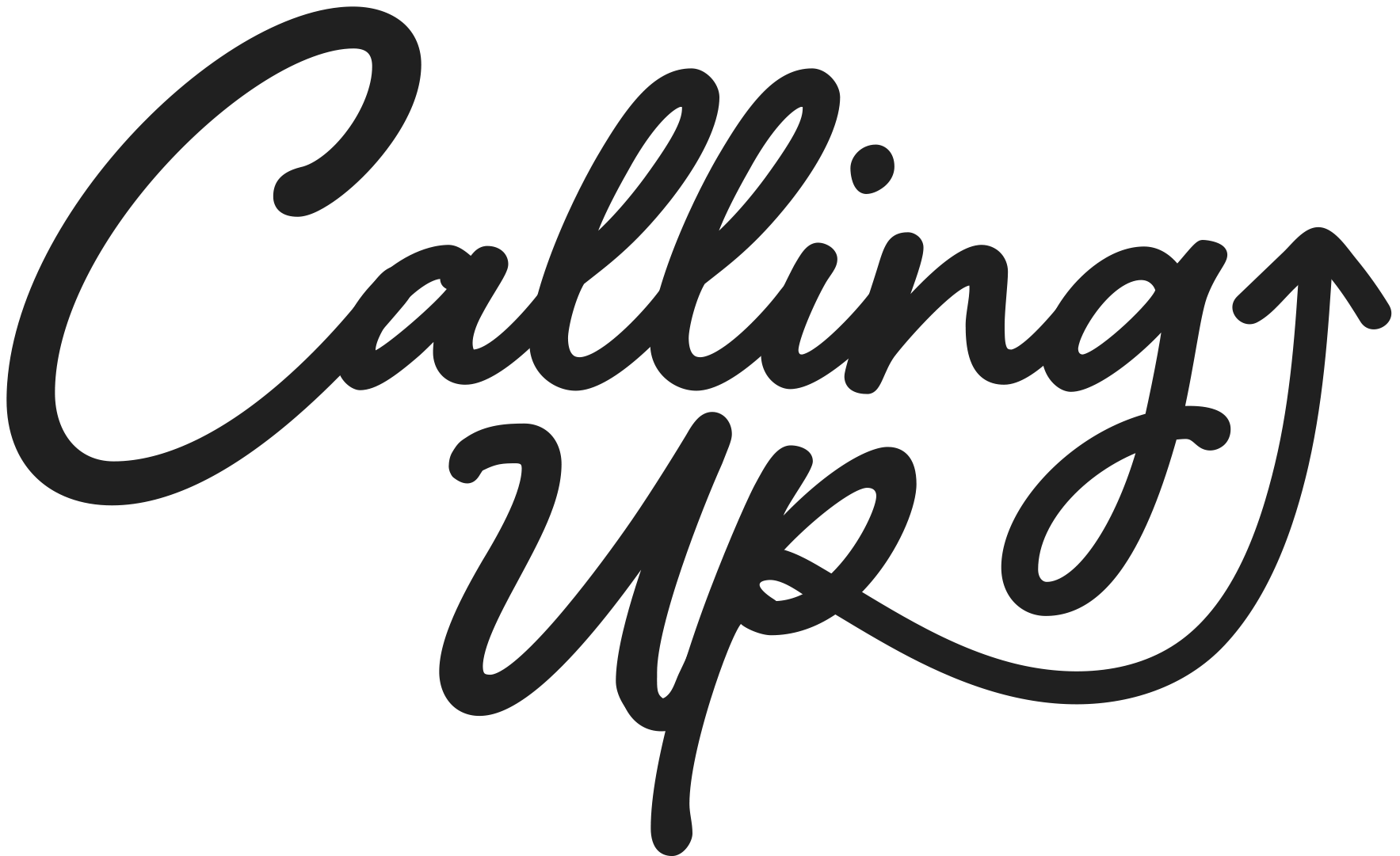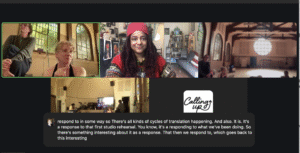Visit the Project Website
https://sites.google.com/berkeley.edu/z-lab-uc-berkeley/0-remake?authuser=0
May 15-18, 2025 Creativity Conference – Southern Oregon University
Embodied Creative Making with Generative AI: An Interactive Workshop
May 16, 2025 3:00 PM – 4:00 PM, in the Diversions Room
- Welcome
- Human Intelligence and Creativity – Making choices with human generated prompts and responses
- Co-Creating with an AI – “All that you touch you change, all that you change changes you…” referencing Parable of Sower, Octavia Butler
- Machine + Human – Iterative observation and response with an embodied AI
- Bodies in the Machine – AI generated fake choreography and live music interaction
- Feedback and Questions
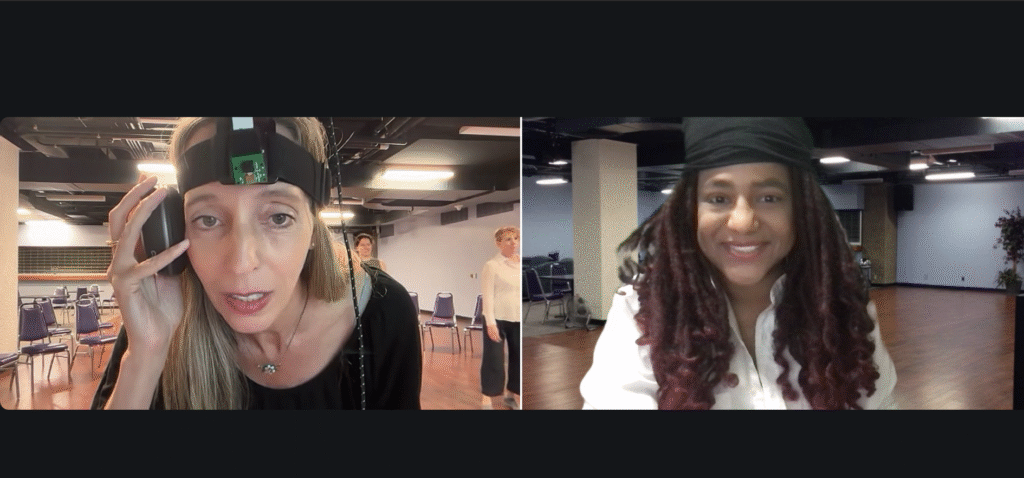
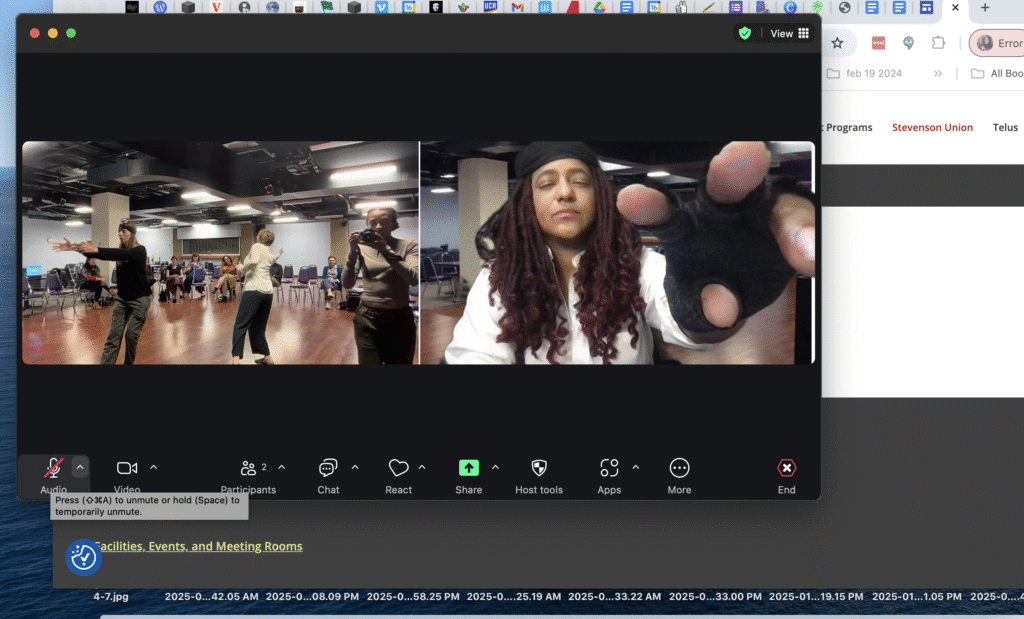
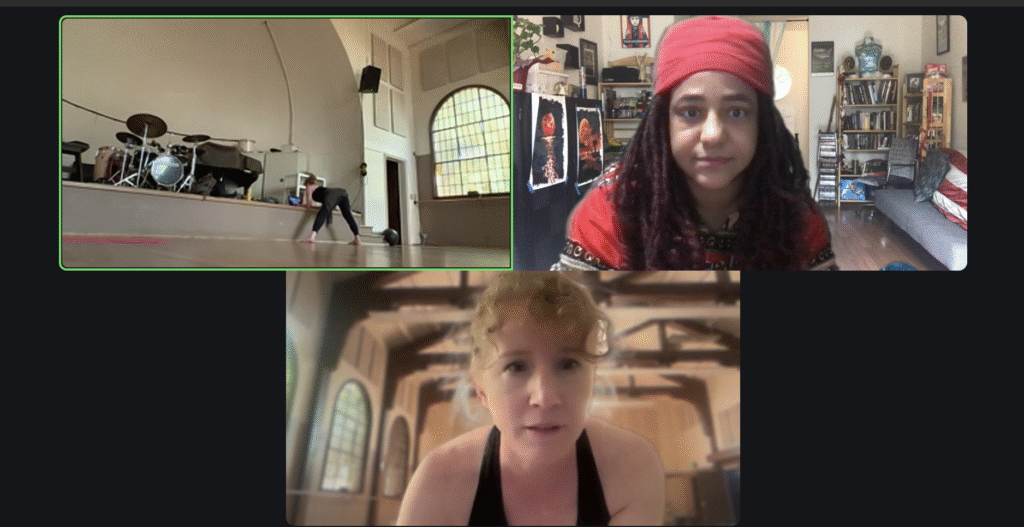
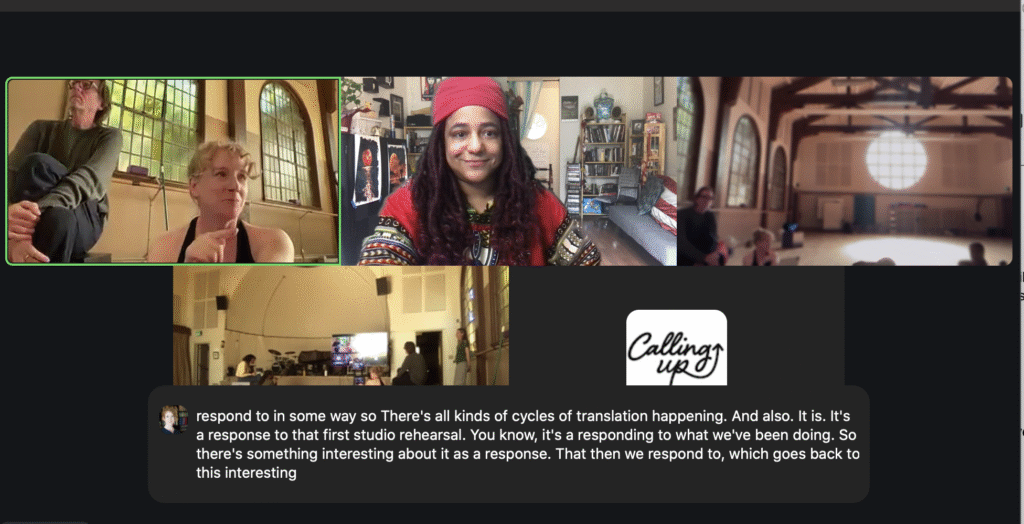
Zero Remake Return Claudia Alick Artist Statement
I’m a disabled artist working at the intersection of performance, accessibility, and emerging technologies. As a remote ensemble member in a hybrid AI-focused dance project, my process was shaped by distance, adaptation, and a commitment to both safety and experimentation. While the rest of the ensemble worked in a university rehearsal hall, I participated remotely from a studio with four screens and an iPad, creating parallel work that mirrored, responded to, and reimagined what was happening in the physical space.
Our early rehearsals took place entirely on Zoom, which I found very accessible. That said, I longed for us to get up on our feet and start moving. We talked about our feelings about AI and explored different experiments introduced by dancers and data scientists. Once the ensemble moved into the rehearsal hall, access became more difficult. The iPad in the room used an AI tool that automatically refocused the camera and ducked the sound. It blurred important visuals and emphasized the wrong audio—like someone breathing near the device instead of the person speaking across the room. By the next rehearsal, we adjusted the setup and added captions, which helped. Even with these fixes, I often only had a partial view or missed things entirely. At the same time, I was doing invisible parallel work—responding creatively in my own space.
I took screencaps of rehearsals through Zoom and fed them into AI image generators. When one dancer expressed discomfort, I committed to only using images of dancers with their consent. I also tried doing some of the physical exercises on my own, photographing myself and feeding those images into AI tools. I created a short dance video from these experiments.
I had a specific aesthetic in mind and sought an AI generator that could reference source images accurately for movement while transforming them with unexpected color, shape, and texture. I didn’t want realism—I wanted distortion, expressionism, and creative abstraction. I discovered the generator I used to rely on had been updated, and the original algorithm was no longer available. It felt like losing a collaborator. I had to search through many tools before finding one that matched my vision. I was especially drawn to the way stills from the animations became distinct images of their own—different every time you paused them.
That said, the AI tools are biased. They rendered bodies thinner, feminized, and whitened. Sometimes, a Black body would be turned white, but the reverse never happened. These platforms are built on colonial and exploitative datasets. Still, they’ve also allowed me to create aesthetically and intellectually provocative work on my own terms—at a distance, but fully engaged.
Throughout the project, I explored new forms. Valencia offered a prompt inspired by Octavia Butler, and since I couldn’t join in person, I created two AI-based videos with music and imagery responding to her quote from Parable of the Sower: “All that you touch you change. All that you change changes you. The only lasting truth is change. God is change.” I also explored ideas from Starseed.
In our final rehearsal together, the ensemble invited me to observe through the screen while they completed Avital’s experiment. She had programmed an AI to observe the room with a personality based on a written prompt. We each offered additional prompts that the AI cycled through in an exquisite corpse format. It was a strange and fascinating way to participate.
This project confirmed for me that the final product of my AI work is deeply personal. No machine could replicate it. The tools are problematic and built on stolen data, but they’ve also enabled me to participate in ways that are meaningful, creative, and accessible. I plan to continue exploring AI and creative production—not because the tech is flawless, but because I’m interested in what it can do when it’s in the hands of someone like me.
This performance builds on an earlier collaboration with Lisa Wymore and Sheldon Smith called Zero Remake. That project laid the groundwork for exploring embodiment, presence, and what comes first the movement or the machine. In this new phase, we extended those investigations into the realm of remote presence, using movement, language, music and technology to examine what it means to be a body in the machine.
It was a pleasure to collaborate with this remarkable ensemble: featuring Valencia James (California College of the Arts), Sheldon Smith (Mills College at Northeastern University), Avital Meshi (UC Davis Postdoc), Aine Nakamura (Music Department), Jasmine Hiroko McAdams (Energy and Resources, Berkeley Center for New Media), Hana Imogene Moffett Kozuka (Data Science), and Lisa Wymore (UC Berkeley). Our work was also shaped by the outputs of multiple artificial intelligence engines and grounded by original video footage recorded by Jasmine Hiroko McAdams. This ensemble brought together a rare convergence of disciplines—dance, data, music, AI, environmental justice—and I’m honored to have co-created with them in this hybrid and experimental space.
CREDITS
- Bodies in the Machine by Claudia Alick featuring Claudia Alick (Calling Up Justice Director)
- Valencia James (Faculty California College for the Arts)
- Sheldon Smith (Professor Mills College at Northeastern University)
- Avital Meshi (UC Davis Post Doc)
- Aine Nakamura (Music Dept.)
- Jasmine Hiroko McAdams (Energy and Resources, Berkeley Center for New Media)
- Hana Imogene Moffett Kozuka (Data Science)
- Lisa Wymore (UC Berkeley Faculty) and the output of a bunch of artificial intelligence engines.
- original video footage recorded by Jasmine Hiroko McAdams
Zero Return Remake AI Generators
- Power director 365- used to pull frames from video
- Adobe express- editing the still frames
- Photoleap- ai transformations
- Vidu- used to create claudia dance from stills
- Capcut- ai video edit tools
- Suno- ai music free level- audio outputs not for commercial use
- ChatGPT
